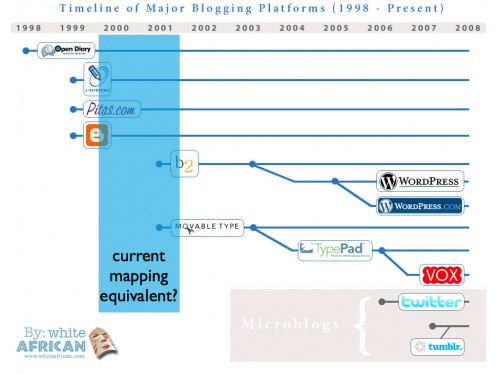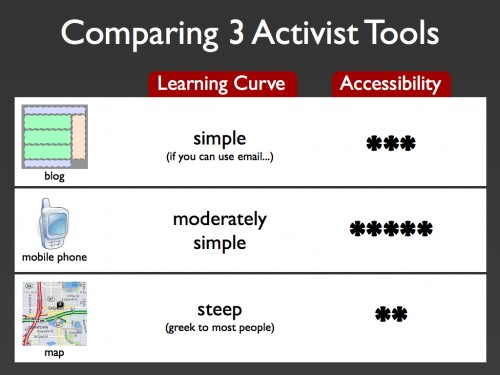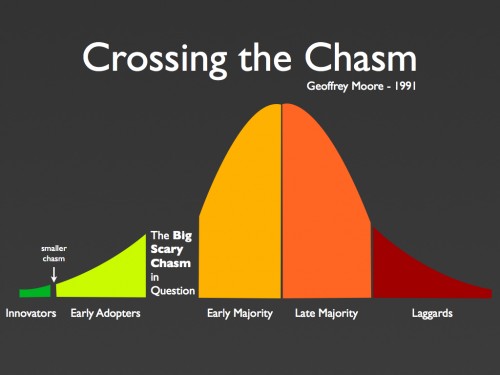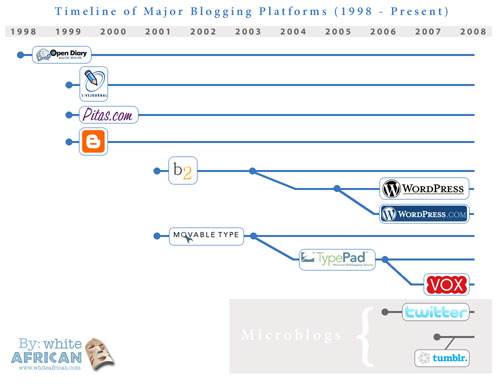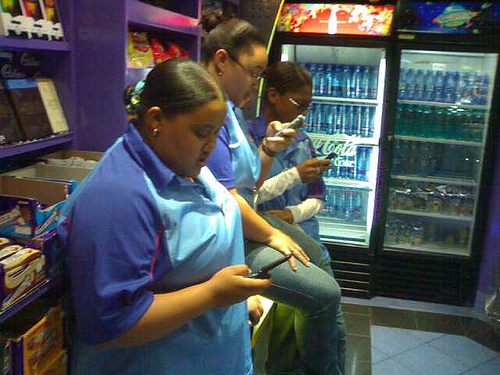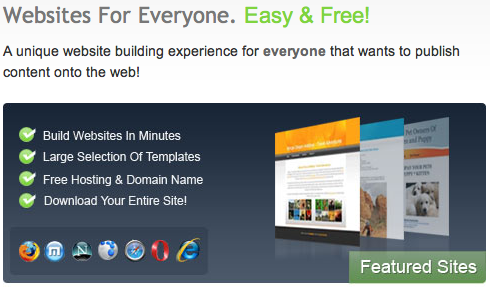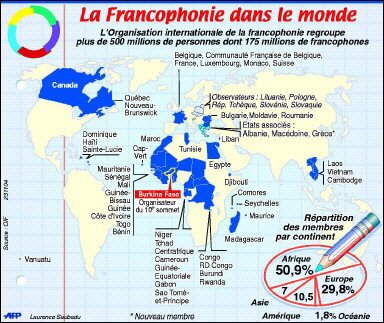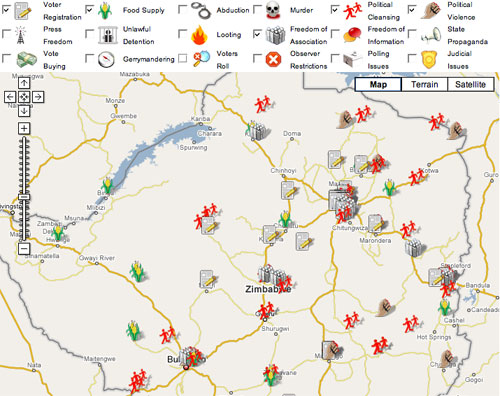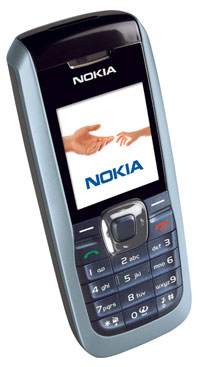Below is a question and answer (through email) that I had with Andi Friedman, who heads up Populi’s Mobile Researcher product. Standby for some really interesting thoughts on the mobile landscape in Africa. (read Part 1, with background on the Populi platform, here.)
A gallery of images showcasing Populi’s Mobile Researcher product in action, on mobile phones and computer interfaces:
Question: What about pricing? How do you charge for Mobile Researcher?
As we roll out additional products on the platform (Populi), we hope to develop a multitude of billing models (including free models whereby revenue could be generated through advertising, opt-in marketing, permission-based data mining or context-sensitive search for example). We’d obviously need to drive volumes for that to work effectively.
For the current Mobile Researcher product which focuses on organisations who deploy fieldworkers to conduct research, we have implemented a transactional billing model whereby the organisation conducting the research purchases credit allowing them to process responses. We took this decision for several reasons:
- The prepaid credit model has worked exceptionally well in Africa so far (e.g. airtime).
- The cost of submitting responses is borne predominantly by the organisation receiving the data (not by the respondent although there are tiny airtime charges for data), thus centralising costs.
- The barrier to entry and risk is very low as we don’t require organisations to buy expensive licenses or software. They purchase credit (even a few hundred dollars worth to start) and don’t need to commit to anything.
- Transactional billing is fair since the organisation is only billed for the service when it is used.
- Many organisations are looking for a hosted solution as they do not wish to or cannot support the hardware and personnel required to manage their own systems.
When an organisation signs up, a ‘Research Console’ (essentially a web portal) is created for them which centralises research-related activity (such as survey design, data export, reporting and fieldworker management). From here they may design surveys which consist of fields (questions) which need to be answered and logic which links them together (such as ‘If response = yes, skip to Q11’).
Surveys are then deployed to fieldworkers who conduct the them on their phones using a mobile application, WAP, Web or SMS (each ‘channel’ has its advantages and limitations). When a completed survey is uploaded from a fieldworker’s phone, the system calculates an amount to deduct from the available prepaid credit for the corresponding organisation based on the number of fields actually submitted in that response.
The baseline cost is approximately $0.01 per field (we work in South African Rands so it’s exchange rate specific). Thus, if 10 questions were posed, the total cost per response would be approx $0.10. If, for some reason, such as skip logic, only 5 questions were posed in the survey, an amount of approx $0.05 would be deducted. Airtime costs (rendered by the relevant network operators) are dependent on the package the fieldworker is on, but even in worst case scenarios are usually in the order of fractions of a cent per survey.
We also negotiate volume discounts in cases where an organisation wishes to purchase a large amount of credit.
Question: Why does Mobile Researcher matter in the African context?
Our goals for Mobile Researcher are to improve the quality, quantity and speed of data being collected. Bad decisions, policy and life choices are the result of poor quality, insufficient or outdated information. In Africa, where these problems are all-too-common, the prevalence of the mobile phone in the absence of other technologies makes it an excellent tool to help improve the situation. Traditionally, paper-based data collection techniques have been expensive, difficult to manage and have taken so long to be processed that the data may be may no longer be accurate or relevant.
To highlight the benefits, Health Systems Trust (an NGO in South Africa I have close ties with) is currently evaluating rural clinics using Mobile Researcher where there aren’t even computers in some cases. They receive the information back in near real-time as opposed to months later and it is stored securely and without the need for additional data capture. The possibility of building a near real-time Health Information System based on Mobile Researcher is a very real one. This could allow outbreaks to be rapidly identified, patients to be more effectively treated and monitored, and so on. As with any new technology however, it takes some time to educate and convince the naysayers.
Question: Who are the competitors and what are their advantages/disadvantages?
There are of course many companies who offer PDA solutions but we believe one of the core differentiators of our solution is that it leverages low cost and existing mobile phones and the internet.
Two companies offering similar solutions in the UK who we’ve found on the internet but haven’t had direct contact with are listed below. There are others but to limit the brevity of this email, I’ve kept to these two.
- Embrace Mobile (www.embracemobile.com)
- Bluetrail (www.bluetrail.co.uk)
Of course we’d like to believe that technically our solution is better (but that is up to the public to decide!). We have extensive experience in both mobile and web development and believe that the simplicity and usability of our solution underpins its elegance.
Africa’s unusual technology profile makes it the ideal place to build and market mobile-driven service delivery and information exchange mechanisms. While sending out fieldworkers to conduct research is critical (particularly in Africa where monitoring and evaluation of intervention efforts is so important), the real power will come when the end user is empowered to retrieve and feedback information. We are working hard to make this a reality. We have direct access to these markets (we’ve been focusing closest to home to start of course). Even in South Africa, there are enormous challenges of poverty and lack of physical infrastructure. But mobile phones can help overcome these challenges – a platform to leverage them is what is missing. I recently read your paper on The Africa Network in which you make similar observations.
In addition to our geographic positioning, we also believe that our high level vision will differentiate us. As I mentioned, eventually we’d like to see the end user being able to submit and request information with almost an unlimited number of interactions (for research purposes but also for a variety of other things such as trade, incident reporting, health information, remote diagnoses, etc.). Most of our competitors’ visions end at research.
We already have good connections with some of the biggest research organisations in South Africa (specifically in the health sector), such as the Medical Research Council of South Africa (www.mrc.ac.za), Health Systems Trust (www.hst.org.za), Human Sciences Research Council (www.hsrc.ac.za), University of KwaZulu-Natal (www.ukzn.ac.za), University of Cape Town (www.uct.ac.za), University of Witswatersrand (www.wits.ac.za), Statistics South Africa (www.statssa.gov.za), and others. It will take time for this technology (or rather the use of it in this way) to become mainstream. It will also take money and high level talks with network operators and manufacturers to be widely successful. It is our belief that we need to build a strong business first to be able to spearhead this.
Another South African NGO called Cell-Life (www.cell-life.org.za) has been working on an Open Source mobile data capture project. I have met with them before and will be meeting with them again this week at their request to discuss areas for collaboration. Of course our strategies are different: they are funded by donations where we are trying to build a sustainable business model but our intentions are similar.
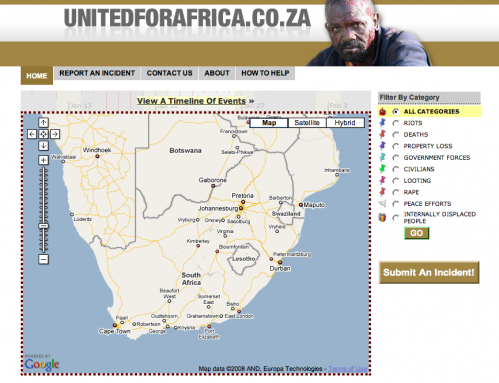
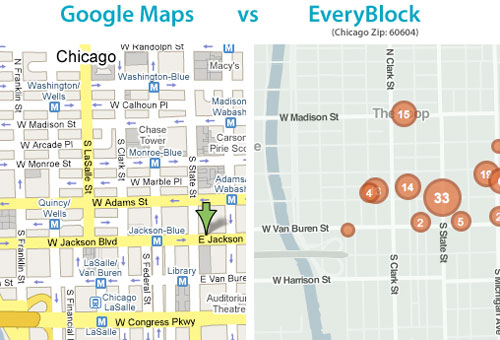
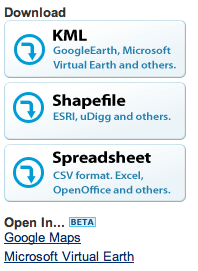 Next up was Sean Gorman, who is doing some really interesting things with his organization(s)
Next up was Sean Gorman, who is doing some really interesting things with his organization(s) 